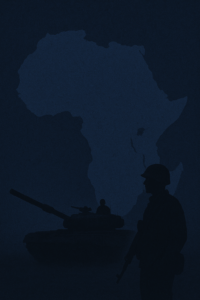In February 2022, Russia launched a full-scale invasion into Ukraine, beginning the deadliest war in Europe this century. Under President Vladimir Putin’s orders, Russia has become a global pariah instead of a global superpower, with many countries launching initiatives to isolate Russia on the international stage after news of the invasion broke out. The Russian invasion of Ukraine served as a sobering reminder for the rest of the world that the rules-based international order had been completely disregarded by Putin, setting a dangerous precedent. Especially for the North Atlantic Treaty Organization (NATO) member-states, the threat of world war, resulting in nuclear war, had never been higher since the end of the Cold War.
NATO was formed in 1949 to provide collective security against the Soviet Union. The alliance remains active currently, with an increased importance in the context of the war in Ukraine. The North Atlantic Treaty holds an infamous and consequential principle: Article 5 asserts that any attack on a NATO country will be considered as a violent attack on all members of the alliance. As a result, all alliance members will take the necessary actions to assist the attacked ally. Simply put, an attack against one, is an attack against all. Article 5 is a cornerstone of NATO and is a central reason why the alliance was created, to deter enemy states from attacking a NATO country because it would likely lead to a full-scale global war.
Putin’s invasion of Ukraine has tremendously increased tensions in Northern and Eastern Europe and the Baltics. The invasion of a sovereign country by Russia worryingly signals that Putin may not stop at Ukraine but would attempt to continue to expand into the Baltic region. Consequently, many once neutral states have decided to end their neutrality and join NATO. The sense of stability that was once felt in Northern Europe has largely disappeared, resulting in states like Finland and Sweden joining NATO in 2023 and 2024 respectively. Both Sweden and Finland are very close geographically to Russia, with Russia and Finland sharing a land border.
Most recently on March 7th, Sweden became NATO’s newest member-state. Russia has long been a force that exposes Sweden’s military weakness. Notably, in 2013, Russian bomber plans simulated an attack on Sweden and in 2014, there were reports of Russian submarines in Stockholm’s waters. Since the time of the Napoleonic War, Sweden has pursued a policy of nonalignment. However, the sheer gravity of Putin’s invasion has shaken the once stable ground of Northern Europe.
For many NATO members, the War in Ukraine has resulted in them pouring increased funding into their militaries and increasing defense spending. All NATO members must reach a spending target of 2% of their GDP going towards defense, which Sweden has announced that they will reach by 2026. The international community is shifting closer and closer to a realist understanding of the world, with language of deterrence and building up of militaries becoming more and more reminiscent of the Cold War. Undoubtedly, the Russian Invasion of Ukraine has undermined the rules-based international order that has guided the international community since the end of the Cold War. How the world, specifically the NATO countries address Russia’s actions will have a powerful effect on the nature of the fabric of the global community. When the war is over, how will Putin be addressed? What will the state of Ukraine be? In the context of strengthening NATO, it will be essential to see how the new NATO member-states adjust to their role in the alliance and if they continue to emphasize defense spending and strengthening their borders.









